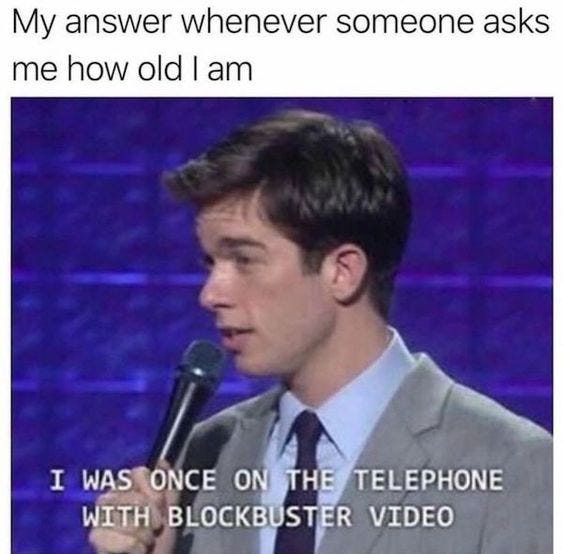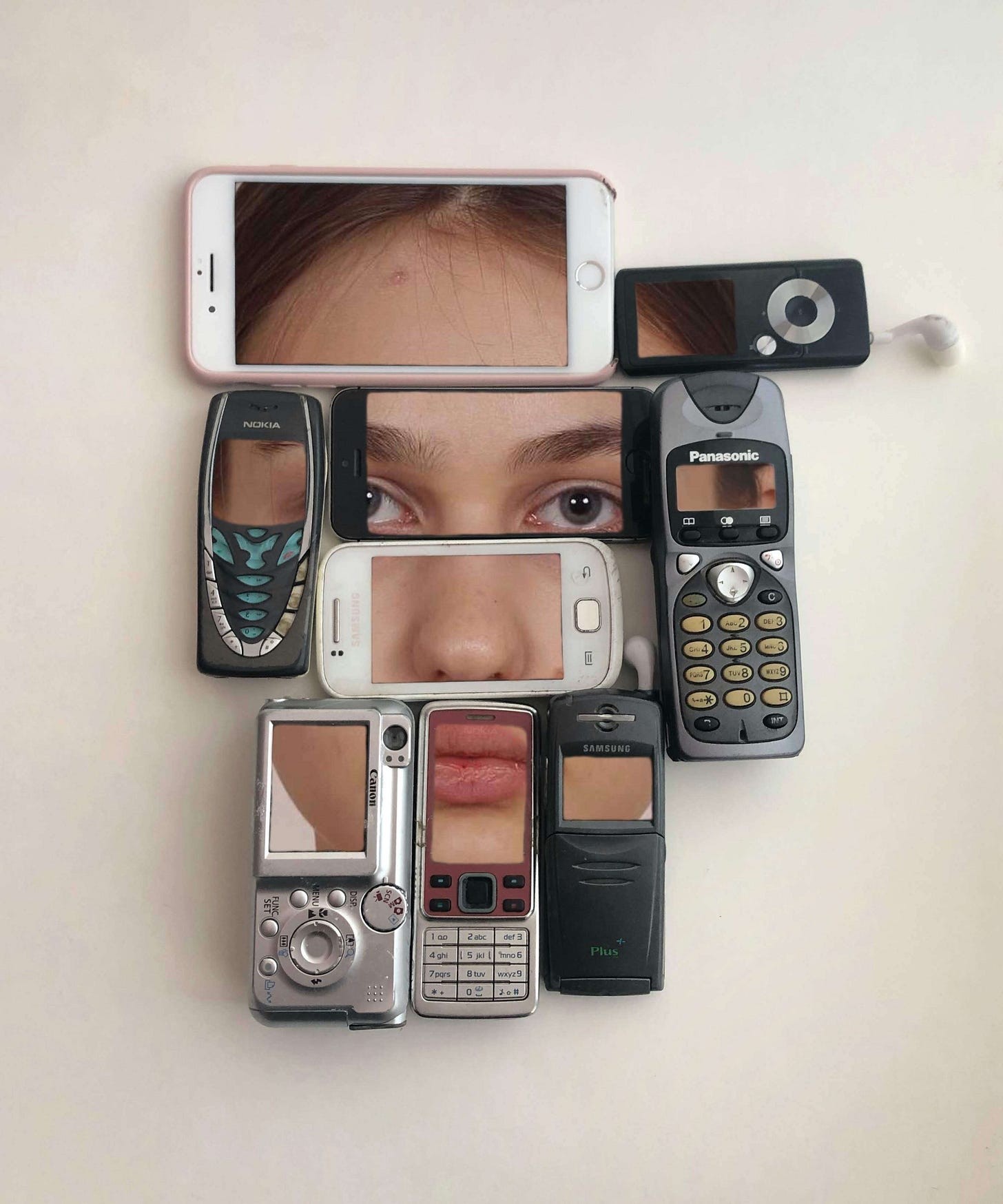We’ve been watching it unfold for years now, but lately, I find myself doing a double-take every time I see yet another Gen Z sporting capris, a relic I thought we'd left buried in the 2000s. "That shit died for a reason," texts my best-styled friend, along with a screenshot of Bella Hadid in a capri-clad Canadian tuxedo (words I never thought I’d type next to each other) captioned: "The return of capris is nigh—are you ready?"
It’s no coincidence that Addison Rae’s rebrand leans heavily into Y2K nostalgia, with headlines proclaiming her the new Britney Spears—conveniently glossing over the fact that the real princess of pop is still very much around (even if not in the same way). Although highly curated and intentionally pretending not to be, her Instagram takes me back to personal memories of me and my friends playing around with the communal Mac’s Photobooth years ago (I won’t give away how many years ago…) and posting to Facebook through an album named after some Kesha lyrics. But I digress…
These are just two case-studies (how academic of me) of a growing obsession that’s taken root in the swirling vortex of the internet: our collective fixation on nostalgia. Like digital junkies chasing the next hit, we find ourselves compulsively drawn to the comforting glow of the past, seeking refuge in its pixelated embrace. From Y2K fashion TikToks to Tamagotchi resurgences, online spaces are drowning in nostalgia, blurring the lines between memory, reality, and, in some cases, straight-up delusion.
The Nostalgia Factory: How the Internet Recycles Our Past
We’ve turned the internet into the ultimate nostalgia machine, accelerating our collective craving for something… Is it just a yearning for “simpler times”? Or is it actually a way to trick ourselves that we’ve got our lives “under control”, as if to escape what’s really in front of us? It’s not just #ThrowbackThursday anymore; the entire digital landscape seems to thrive on the past. From the resurgence of bad-quality colourful compact cameras to hyper-curated "vintage" trends, the digital realm has perfected a kind of nostalgia that feels less like reminiscing and more like mining our history as an escape. TikTok’s obsession with early 2000s fashion, retro-style memes, and even outdated tech evokes a longing that’s designed to be shared, replicated, and commented on — the past repackaged as social currency. But it’s not all just funsies and TikTok sounds; there’s also an element of some sort of manufactured connection that keeps us trapped in a cycle of longing, where every time we’re looking to move forward we stumble upon a trend we saw long ago and thought we’d taken to the grave.
The Generational Nostalgia Gap: Millennials, Gen Z, and Time-Travelling Toddlers
What’s fascinating is how digital nostalgia affects different generations. Millennials — the first generation to really grow up online (or what we thought to be online) — straddle the divide between analog and digital worlds. We’re old enough to remember dial-up internet and flip phones, but young enough to seamlessly embrace every new platform (or so I’d like to think, but I won’t ask for confirmation from my Gen Z friends). For us, nostalgia often takes the form of early internet relics: grainy photos from MySpace, the neon chaos of GeoCities, or the old MSN “statuses” we curated like digital personas. All of which we’re happy to look back on, but even more so to call our past.
Then comes Gen Z, the true digital natives. Their nostalgia feels strange, almost secondhand. They romanticise the 90s and early 2000s — eras they never actually experienced and eras which those who did wished didn’t live eternally online. For them, Y2K is a curated vibe, not a lived reality. They wear low-rise jeans and butterfly clips like costumes in a play, reviving an aesthetic that should have stayed dead but instead thrives in this recycled digital limbo. I stare at young girls’ TikTok vintage hauls and realise that I'd be rich if I still had all my Abercrombie cami tops, yet they don’t know the emotional tattoos that low-rise jeans left on our generations’ bodies.
 Tiktok failed to load.
Tiktok failed to load.Enable 3rd party cookies or use another browser
And then there’s Gen Alpha, kids for whom nostalgia is already being created in real time. Every TikTok sound, every viral meme, every fleeting trend is captured, archived, and then repackaged months later as a “throwback.” For them, nostalgia happens at breakneck speed, as they witness their childhoods constantly resurfaced for engagement, even before they’ve fully lived them. To me, it’s mad to even think about nostalgia when speaking about Gen Alpha: how can there be a “a sentimental yearning for the past that can evoke feelings of pleasure and sadness” when there’s no past to look at? Yet, it’s as if they could feel some kind of generational nostalgia, longing for that past that wasn’t but could’ve been theirs.
The Gendered Nostalgia Trap: Women Stuck in a Time Loop
For women, as most things unfortunately are, it’s more layered and carries deeper complications to it, presenting nostalgia through a uniquely toxic paradox. We’re constantly encouraged to embody the future — modern, progressive, empowered — while simultaneously being pulled back into the past. There’s an underlying pressure to conform to an impossible blend of past and present: the domesticity of the 1950s housewife, the free spirit of the 70s bohemian, the power of the 80s corporate woman, all while navigating the hyper-polished world of today’s digital filters and expectations.
This is especially evident in how women are encouraged to view femininity and our roles in society. TikTok's resurgence of vintage beauty standards and 1950s housewife aesthetics isn't just another excuse to pin women against each other; it’s nostalgia with blinders on. Romanticising an era where women had little autonomy is one thing, but then blending it with the “empowerment” rhetoric of the 21st century as the only reasonable way to successfully fulfil the role of a modern woman creates a paradox that feels impossible to navigate.
We’re expected to celebrate body positivity, yet at the same time, we see a resurgence of heroin chic and low-rise jeans, pushing us back into the beauty ideals of the 90s and early 2000s. It's like living in a glitch, where we're constantly toggling between progress and regression, never fully settling in one place. Unreachable and inescapable at the same, and not out of coincidence.
The Endless Cycle: Nostalgia as a Tool for Control
At the core of our online relationship with nostalgia there’s a need for comfort in a world that constantly feels overwhelming. The internet, with its endless stream of news, trends, and global crises, can feel like a chaotic force pulling us in every direction. Nostalgia becomes a digital balm—something that lets us step out of that chaos and into a past we can control. It's easier to scroll through curated 90s playlists or watch TikToks recreating Y2K fashion than face the disarray of the present. These familiar memories serve as a buffer between us and the uncertain now, let alone the future.
But the internet's version of nostalgia isn’t just comforting; it’s also highly marketable. Tech companies and content creators have learned that the past sells. Whether it's the re-release of classic TV shows on streaming platforms that feel way too soon to be recreated, or fashion brands capitalising on retro trends, nostalgia is now a billion-dollar industry. And the algorithm knows it. By feeding us memories that evoke comfort, it keeps us scrolling, buying, and engaging. It turns our personal pasts into commodities, weaponizing nostalgia as both entertainment and economic currency.
However, this digital nostalgia often feels hollow because it’s sanitised, packaged, and disconnected from the real struggles and triumphs of the past. We’re not remembering how things truly were; we’re engaging with a filtered, airbrushed version of history. In this sense, online nostalgia is less about revisiting memories and more about constructing them anew, distorting our sense of identity and history in the process.
There’s also an element of control embedded in this. Nostalgia provides a curated escape from the chaos of the present, allowing us to retreat into a sanitised past where things feel stable. But as philosopher Herbert Marcuse argued with his concept of "repressive tolerance," this indulgence in nostalgia also serves a more insidious purpose. We're allowed to revisit and consume fragments of the past, but only in ways that don’t challenge the current social order. The algorithms and platforms that profit off nostalgia keep us contained within the familiar, distracting us from confronting or dismantling the systems that create our modern anxieties. In this way, our endless scrolling through reboots and retro trends lulls us into a false sense of comfort, while subtly reinforcing the status quo.
Selective Memory: The Paradox of Progress in Nostalgia
What we share and remember online often only tells part of the story. While we celebrate the seemingly “simpler” eras like the 50s housewife or Y2K fashion, we tend to forget or overlook the restrictive norms those styles once symbolised. I will always support and fight for another woman’s freedom to choose and do as they please —even if I was to choose and do differently. That said, I believe there to be a complex interaction between the vicariously nostalgic and those who first lived it. Adopting a trad-wife aesthetic and role today may seem like a reclamation of female freedom for some or like playful irony for others. But for some it’s also a reminder of how vulnerable the rights we take for granted truly are, how easily they can be stripped away. Not to get all political on this piece, but it is inevitable to think about how partial nostalgia could also potentially mean partial accountability for what the future may hold.
And then there's the Y2K revival, with Gen Z boldly and proudly (as they fucking should!) embracing low-rise jeans and mini minis, seemingly “free” from the body-shaming culture many of us remember. I look at them with a mix of envy and anxiety—how liberating it seems to walk through the world without feeling that constant judgement. Yet, I can’t help but wonder what it means for them today. Has the world truly changed, or have we simply found new ways to disguise the same pressures? It’s a complicated kind of nostalgia—one that makes me yearn for a freedom that never fully existed, while also worrying about how much of that pressure still lingers beneath the surface.
But what are we really longing for?
So, how do we break free from this cycle of nostalgia, or should we even try? Maybe it’s not about completely rejecting the past but about asking ourselves why we're drawn to certain eras in the first place. What parts of these nostalgic visions actually serve us, and which ones are simply comforting illusions? Is it possible to celebrate the aesthetics and culture of another time without getting caught up in its limitations?
For women, the question of nostalgia becomes even more complex. Are we drawn to these retro aesthetics because they offer a sense of stability in an ever-changing world, or do they subtly remind us of times when our identities were more tightly controlled overlooking some elements of it? And if we’re curating our online selves through these lenses, are we liberating ourselves—or placing ourselves in yet another box?
Maybe the real challenge isn’t about escaping nostalgia, but about learning to navigate it with eyes wide open. What would happen if we could engage with the past on our own terms, taking what empowers us and leaving behind what doesn’t? Can we use nostalgia as a tool to better understand ourselves, without letting it cloud our vision of the future and, for that matter, of the past?
In the end, the question isn't whether we should indulge in nostalgia, but how we can do so without losing sight of the present—or the future. The past is always there, waiting to be revisited, but what we do with it is still up for debate. Where do we go from here?












Your article was very useful in terms of questioning the why of nostalgia, the role of brands in mining these emotional attachments, as well as hinting at the risks....I think there's a bunch of insidious risks worth exploring as a deep dive. For one..."Make America great again" is the ultimate political hijack of nostalgia pulling the American nation into an imagined reality - a time that it was largely not great for the majority of people. I agree that the internet as an ever-growing never-ending churn of content and visuals aids this normalization and nostalgia.
Culturally, I think it also makes us dumber and lazier. Curiosity dies because instead of creating anew we spend our time looking backwards and searching through what has been done to copy or update or rekindle . Openness to novelty and the unexpected diminishes, imagination atrophies and innovation suffers as we fail to engage with and deal with its challenges and opportunities of the present, and create the future that we need.
I think you're onto something that the time spent on screens fuel nostalgia. ( I exclude digital creators - but the vast majority of time spent on screens is spent consuming, NOT creating.)
Could it be that less time on screens might fuel more boredom, more travel, more talking, more discovery and more creativity - or has that horse bolted ?
This is so interesting! I wonder if generations above millennials have a similar relationship to nostalgia for times they didn't live through or if the war years killed that for them, because for millennials nostalgia still wasn't fully tied to the internet, perhaps, we have the analogue kind: vinyls and film photography, a romanticisation of the 60s and 70s. But I do think we are considerably doing this faster and faster - the repackaging of it is now so quick though that, as you said, it's crazy to think about the "nostalgia" Gen Alpha will experience. So many thoughts.